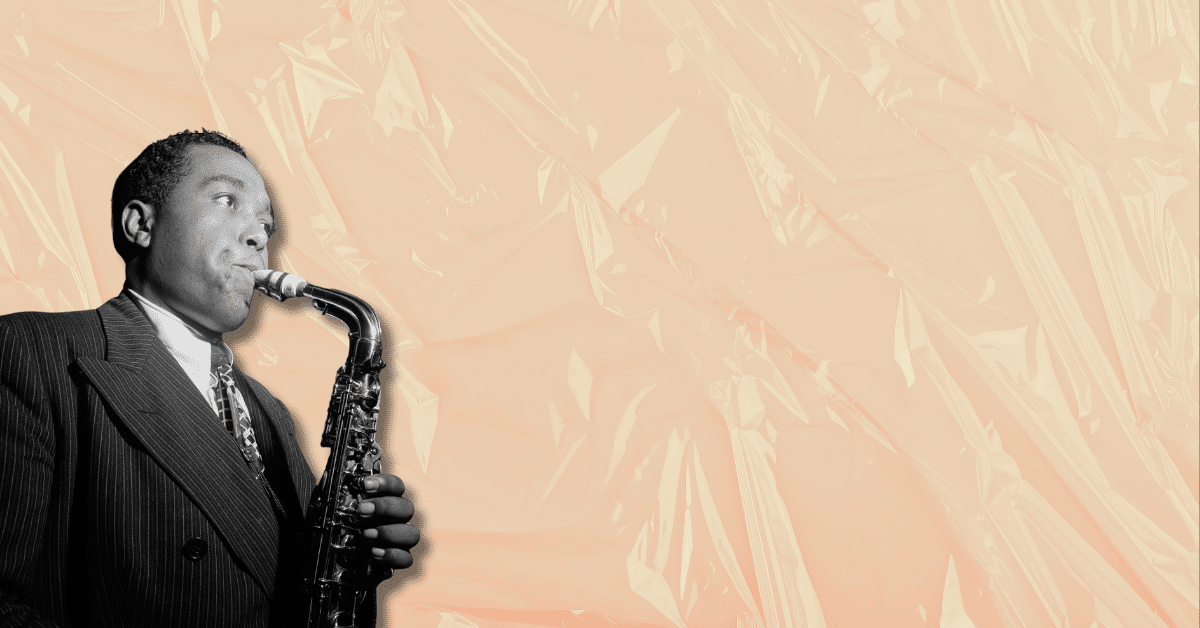Charlie Parker walked into Massey Hall in May 1953 without a saxophone. He didn’t bring one. Lost? Stolen? Sold at a pawn shop? No one’s entirely sure — but what happened next, and the instrument he used, became one of the great stories in jazz history.
In 1949, a new kind of saxophone emerged from a workshop in London.
It wasn’t made of brass or bronze, and it didn’t shine like the gleaming horns of the swing era. Instead, it was made of cream-coloured acrylic and carried the name “Grafton.”
This plastic saxophone looked more like a prop from a futuristic film than a serious jazz instrument.
But just a few years later, it would end up in the hands of one of the greatest saxophonists of all time: Charlie Parker.
London-Made, American Played
Originally prototyped in 1949, the Grafton saxophone was designed by Italian-born instrument maker Hector Sommaruga and manufactured in London between 1950 and 1967.
It was intended as a low-cost alternative to metal saxophones, priced to be accessible to students and hobbyists. But its bold appearance and surprisingly good tone made it a curiosity among pros.
The body was made from injection-moulded acrylic, reinforced by a metal core and finished with brass keywork.
Light, visually striking, and relatively cheap to produce, the Grafton was nonetheless fragile and prone to cracking—traits that limited its longevity.
And yet, it found its way into the history books thanks to one unforgettable performance.
Bird and the Grafton
In 1953, Charlie Parker flew to Toronto to play a legendary concert at Massey Hall. It was a hastily organised all-star gig featuring Parker, Dizzy Gillespie, Bud Powell, Charles Mingus, and Max Roach—a once-in-a-lifetime lineup that came to be known as “The Quintet.”
There was just one problem: Parker didn’t bring his saxophone.
Accounts vary, but the most commonly accepted version is that his horn was either lost, stolen, or left behind. Scrambling for a solution, the organisers handed him a plastic Grafton alto.
Most players would have baulked. The ergonomics were clunky, and it was notoriously delicate. But Parker was Parker.
That night, using a budget plastic saxophone made in London, he delivered one of the most blistering and inventive live performances ever recorded.
From the opening notes of “Perdido” to the final chorus of “Salt Peanuts,” the Grafton didn’t hold him back one bit. If anything, it added an edge.
A One-Off, Preserved Forever
The Massey Hall concert was recorded and eventually released on the album Jazz at Massey Hall, which went on to become one of the most important live jazz recordings in history.
The plastic Grafton saxophone that Parker played at the legendary Massey Hall concert in 1953 didn’t vanish into history.
It resurfaced decades later and was sold at a Christie’s auction in London in 1994 for £93,500.
The buyer?
The American Jazz Museum in Parker’s hometown of Kansas City, where the instrument now resides as part of their permanent collection.
The Grafton sits on display just a few blocks from where Charlie Parker grew up in Kansas City—a reminder that sometimes, the most iconic moments in jazz come from unexpected circumstances…
Looking for more? Check out our pick of essential Charlie Parker recordings here.
We also published the story of his jam session humiliation as a 16 year old and the full recording of his interview with fellow alto saxophonist Paul Desmond.

